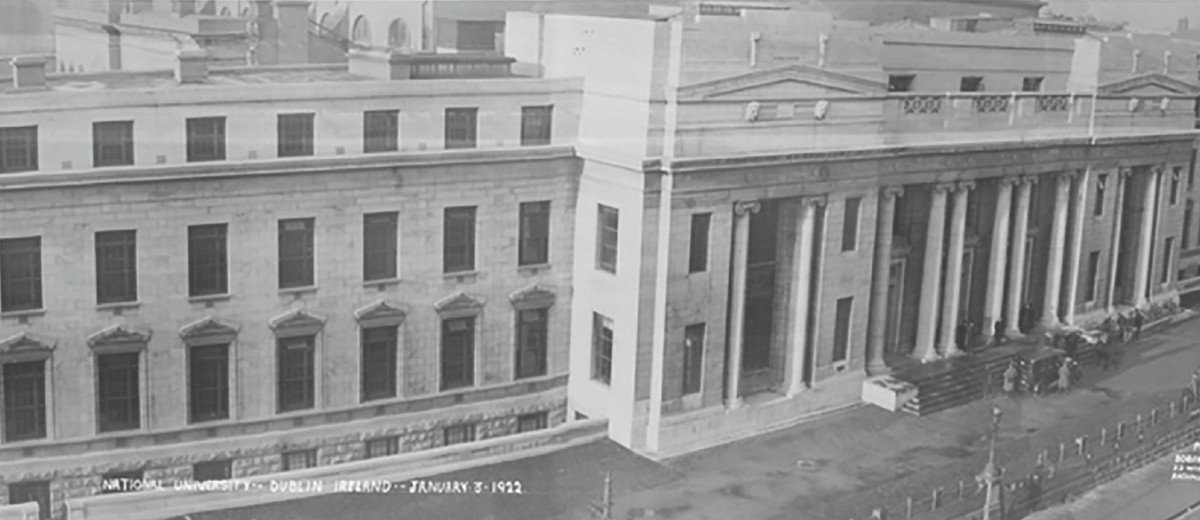ON 2 AND 3 December 2022, UCD will host the final state Decade of Centenaries conference marking the Foundation of the Irish Free State 100 years ago. On 6 December 1922, with Ireland at the nadir of its civil war, the provisional arrangements laid down in the Anglo-Irish Treaty came to an end. With this, the Irish Free State officially came into being on the anniversary of the signing of the Anglo-Irish Treaty. Legally, this marked the foundation of the Irish Free State and a significant moment in Irish independence. In the 12 months since the signing of the document, the country and the movements which had won Irish independence had been sundered by divisions over that very document.

The conference will assess domestic and international policy, the legal underpinnings of the state, its constitution, the transition of the civil service, the judiciary, and the foundation of government departments. It will explore identity, language, and the social structures of independent Ireland including the place of gender, religion, minority experience, and the provision of services in the new state.
The Irish Free State faced major challenges in building functional, stable and solvent state following a decade of war and revolution.

Born into partition and violence, the Irish Free State faced major challenges in building a functional, stable and solvent state following a decade of war and revolution. Much of the country bore the physical scars of violence and destruction wrought between the Rising and the outbreak of the Civil War. In Dublin, both the GPO and the Four Courts along with stretches of adjacent streets still lay in ruins from the Rising and the opening of the Civil War respectively. On the day after the Irish Free State came into being, TD Seán Hales was shot dead by anti-Treaty forces while making his way to Dáil Éireann. The Free State cabinet immediately ordered the execution of four IRA prisoners in reprisal. Both the executions policy and the civil war which provoked it lasted through to May 1923. Financially, the Free State’s minister for finance obsessed with balancing the country’s finances. However, some ambitious infrastructural developments were sanctioned, most notably the Shannon Hydroelectric Scheme which paved the way for rural electrification. The borders of the Irish Free State were still in flux. The treaty had provided for an Irish Boundary Commission to determine the dividing line between the Free State and Northern Ireland. With the collapse of this commission in 1925, the border was left as it was and is. The formation of a functional and unarmed police force, the suppression of an army mutiny in 1924, and the peaceful transition of power from pro- to anti-Treaty political parties in 1932 were all milestones in the transition out of revolution and into the maturation of Irish statehood.
In spite of these challenges, Ireland survived and continued to function as a democracy in the ensuing decades which saw many European states either succumb to authoritarian dictatorships or suffer invasion or annexation. Instead, Ireland’s greatest existential threat in the mid-twentieth century was emigration and the poverty which provoked it. The conference will conclude with a roundtable discussion which will examine the evolution of Ireland, socially, politically, economically in the century since 1922.
Alumni are welcome to join us at the conference. For tickets and further information, click here.
■ www.ucd.ie/centenaries. Conor Mulvagh is Associate Professor, UCD School of History and is actively involved in commemorations activities at university, national and international level.

